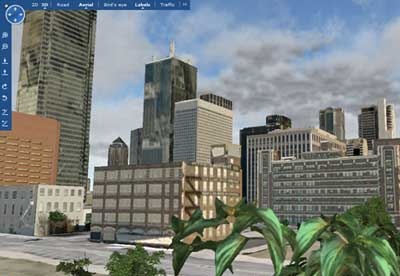

To see what is possible check out the following YouTube videos of 3D Google Earth animations created with Sketchup and the KML markup language. Many of them can be downloaded from the Sketchup 3D Warehouse.Īnother significant capability of Google Earth that none of the other platforms have is true 3D animation. See Ī similar level of detail can be found in many other legacy models around the world, eg. You can even go inside the chapel in the base of the statue, where all of the furniture, light fittings etc. The entire mountain is modelled in excrutiatingly accurate detail. Compare that with the original manually created version (modelled by yours truly). Zoom in and it is basically a featureless blob. Viewed from a distance the photogrammetry version looks reasonable. The legacy models are usually far more detailed and accurate than what is created via photogrammetry.Ī good example is Christ the Redeemer statue in Rio, which you show a picture of above. Sometimes the legacy models will also float above the terrain, if the Google terrain has been changed since they were created. (The same is true with photogrammetry models).
#VIRTUAL EARTH 3D ONLINE FULL#
Just be aware that you will sometimes have to wait for a while for the model to be displayed in full detail, especially on a slower PC. – You naturally also have to tick the box next to 3D Buildings on the left under Layers after you exit from Tools. – In the Terrain group 3/4 of the way down untick the “Use 3D imagery” box – Select the 3D View tab at the top left if not already selected The rest can be displayed by changing a settings option in Google Earth as follows: Examples include Machu Picchu in Peru and Martin Luther King memorial near the Lincoln Memorial in Washington DC. Some display by default as they have not yet been superceded by photogrammetry versions. You did not point out that all of the legacy models still exist in Google Earth and can be displayed. Under Google Earth above you mentioned legacy 3D models and the newer photogrammetry models. READ MORE: Google Earth vs Google Maps: What’s the Difference? If you want more information, Google explains how they build their maps with such attention to detail. It’s the side-angle cameras that paint the texture along the sides of mountains and building walls. When you have overlap, photogrammetry pulls all the photos together in a textured 3D mesh. Instead, it uses planes that zig-zag back-and-forth. Google Earth doesn’t use satellite imagery for this process. AUTOMATED PHOTOGRAMMETRY: The only answer for Google Earth was to create automated 3D models with stereophotogrammetry.Think about the time and effort it would take to create millions of high-rise buildings across the world.
#VIRTUAL EARTH 3D ONLINE MANUAL#
The biggest downfall was that SketchUp was a manual process. But users can’t submit their 3D models to Google Earth anymore.
#VIRTUAL EARTH 3D ONLINE SOFTWARE#
They started giving the software away free.


 0 kommentar(er)
0 kommentar(er)
